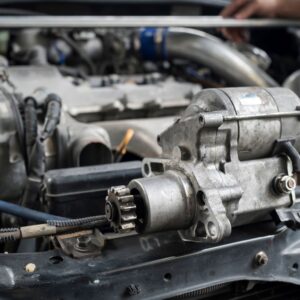Q: Where is the ECM Typically Located?
A: The location of the engine control module (ECM) varies from model to model. It could be in the engine compartment, behind the kick panels, or a host of other places. Your best bet at determining its exact location would be to consult your vehicle’s manual.
Earlier vehicles that had the engine and the transmission both controlled by the same module referred to this component as the “PCM.” When the transmission control module (TCM) is in charge of the transmission, you’ll have an “engine control module.”
The engine control module receives information from the various sensors and provides output to the actuators (like the fuel injectors, EVAP solenoid, ignition coils, electronic throttle body, etc). Like any other computer, inputs and outputs are everything, as are the connecting wires or the network.

Tips on How to Access the ECM
As mentioned previously, following the trail of the main harness of electrical cables should bring you to your vehicle’s ECM. The trail should bring you to a well-protected circuit board, and inside, you can look for a component with a label that reads “Engine Control Module” or “Engine Control Unit”. However, you may not always find this label on the unit. Most vehicles don’t have it labeled.
From here, you can easily access your vehicle’s ECM. Despite its importance, repairing or replacing an ECM isn’t as difficult as it could be except in cases where special programming is required, which is very common on newer platforms. If yours requires high-end tools for programming, you might find that your vehicle doesn’t even start even though you did a good job changing the unit.
Don’t forget to consult your vehicle’s manual for more specific details since the ECM’s location and the procedures for replacement varies from model to model.
Any information provided on this Website is for informational purposes only and is not intended to replace consultation with a professional mechanic. The accuracy and timeliness of the information may change from the time of publication.

































